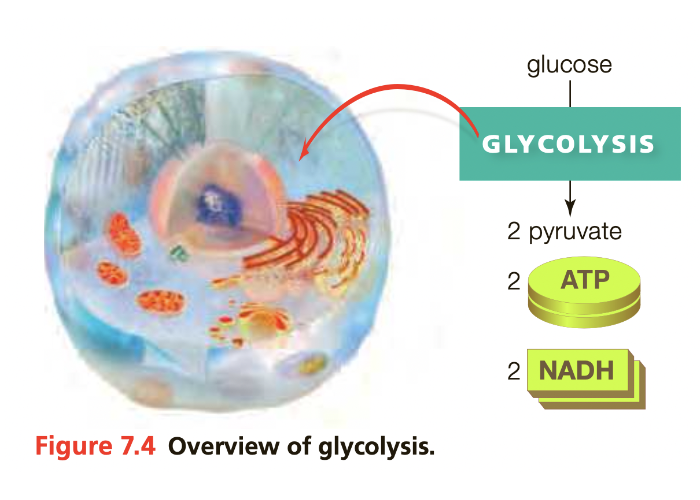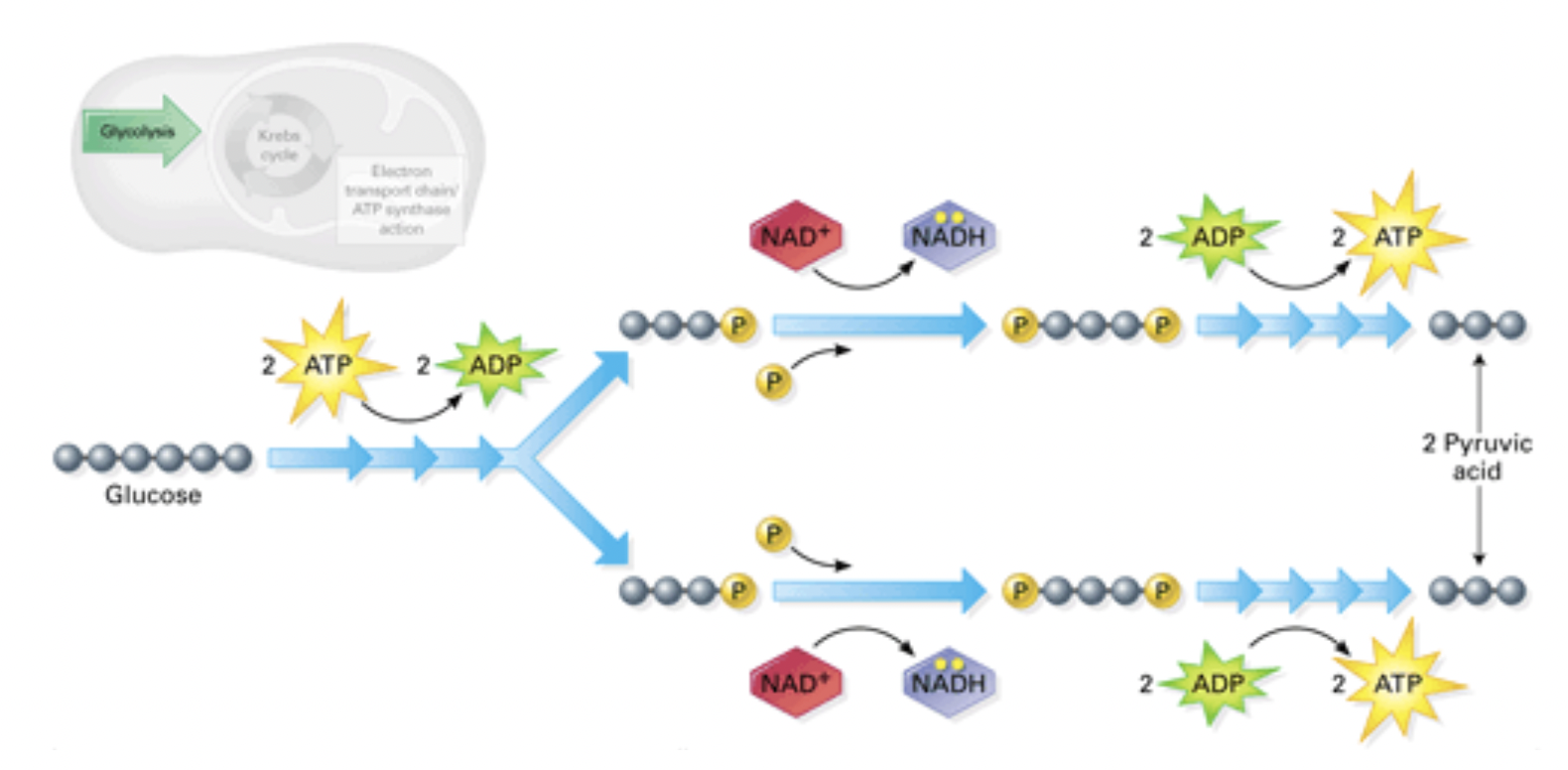cellular respiration (glycolysis, citric acid cycle, phosphorylation, fermentation pathways, food energy)
[[Introduction to Carbohydrate Breakdown Pathways[[
Aerobic Respiration - Cellular respiration that ==requires oxygen==
- Glucose and oxygen are converted to Carbon dioxide + water, yielding ATP
- Consists of four metabolic pathways: glycolysis, acetyl-CoA formation, citric acid cycle, electron transfer phosphorylation
- All involve electron transfer chains (ETCs) and share products/substrates
Fermentation - Glucose-breakdown pathways that ==make ATP w/o oxygen or ETC’s==
- Many organisms use this as an ==alternative to cellular respiration== due to a ==lack of available oxygen==
]]Glycolysis - Sugar Breakdown Begins]]
Glycolysis - series of reactions that @@converts ATP to pyruvate@@, takes place in cytosol
- Pyruvate - Organic compound w/ @@3 carbon backbone@@
Breaks one carbon-carbon bond of a glucose molecule, @@uses 2 ATP and produces 4@@
2 net atps

Investment (Energy-Requiring)
- Phosphate group is transferred from @@ATP to glucose@@, forming a @@glucose-6-phosphate@@
- phosphate group is transferred from 2nd ATP to an intermediate, forming a @@6-carbon molecule w/ 2 phosphate groups@@
- 6-carbon molecule splits in half, forms @@2 G3P molecules@@
Energy-Harvesting
Redox reaction transfers e- and h+ from @@PGAL to NAD+ (coenzyme),@@ reduces to @@NADH@@, and also attaches a phosphate group to 3-carbon intermediate
Transfers a phosphate group to ADP, @@makes ATP@@
Remaining phosphate group @@transfers from 1 carbon to another@@
Goes to another ADP, so @@another ATP forms@@, finally @@producing pyruvate@@

{{Acetyl-CoA Formation and the Citric Acid Cycle{{
- Acetyl-CoA and the citric acid cycle break both carbon-carbon bonds
- Energy released from breaking is carried by NADH and phosphate bonds of ATP
Acetyl-CoA Formation
- Pyruvate is transported across 2 mitochondrial membranes, goes into inner compartment (filled with gel-like substance called matrix)
- Redox reaction splits a carbon from pyruvate which diffuses out of cell, produces NADH
- Carries 2 carbons into citric acid cycle
Citric Acid Cycle
- Harvests energy from Acetyl-CoA
- Substrate of first reaction is product of last reaction
- 2 carbon atoms form citrate w/ oxaloacetate
- Redox reactions occur: NADH forms
- NAD+ → NADH and FADH → FADH2
- Carbon is removed from intermediate, releasing e- and h+, forming NADH (NADP+ as well)
- Product: oxaloacetate
- 2 rounds of the citric acid cycle will harvest the energy
}}Aerobic Respiration’s Big Energy Payoff}}
Electron Transfer Phosphorylation is similar to the light-dependant reactions of photosynthesis.
- Excess energy transports H+ from matrix to intermembrane space
- Occurs w/ NADH and FADH2 delivering e- and h+ to ETCs in membrane
- Energy loss fuels H+ active transport H+ flow back to matrix through ATP synthase
- drives ADP → ATP
- Oxygen accepts e- and h+, forming water (reverse photolysis)